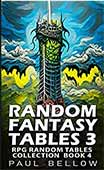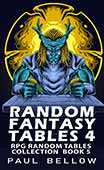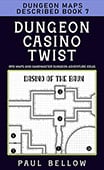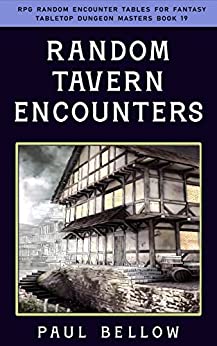The 2025 Monster Manual is not just a bestiary—it’s a Pandora’s box of potential, teeming with more than stat blocks and special abilities. For the enterprising Dungeon Master, every new monster and mechanical tweak is an invitation to turn expectations upside down. To “break” the Monster Manual, in this context, is to stretch, amplify, and remix its contents for maximum mayhem and narrative flourish. It’s not about min-maxing for efficiency or flattening the party; it’s about finding those unexpected intersections that generate stories neither players nor DM could have plotted in advance.
When DMs break monsters, they tap into the heart of emergent play. Suddenly, a hydra isn’t just a hydra—it becomes an apex predator when roaming haunted wetlands, its heads striking from impenetrable gloom at every turn. The juxtaposition of mechanical features with dramatic environments and cunning tactics is a recipe for adventure climax unlike any pre-written encounter. This isn’t mere power gaming. It’s the creative act of using the game’s tools to spark surprise, tension, and laughter—sometimes all in the same round.
Of course, there’s a risk here: breaking monsters often means breaking balance. Instead of carefully calibrated encounters, you open the floor to unpredictable challenge spikes, sudden reversals, and the possibility of chaos spiraling out of control. That’s intentional. In the hands of a thoughtful DM, imbalance becomes an engine for excitement. Carefully-controlled unfairness lets players experience the full range of emotion a good game can offer, from desperate struggle to wild triumph.
Framed as sandbox play, breaking the Monster Manual means giving monsters the spotlight they deserve. Letting them act at their full, terrifying potential can upend party tactics and force ingenuity on both sides of the table. The aim is not to punish but to delight—to transform each monster from a speed bump into a storytelling event. When done well, the fallout is less about rules and more about memorable moments that linger long after the dice are packed away.
Throughout this guide, you’ll discover methods and mindsets for bending the Dungeons & Dragons Monster Manual’s monsters past their limits, in ways that reward creativity and shared narrative. Whether you want to keep your veterans guessing or simply revel in the chaos, every section of this article arms you with specific combos and DM practices. The result? Encounters that are surprising, theatrical, and deeply tailored to your group’s style of fun—not beholden to balance, but in service of unforgettable play. And check out our AI monster generator for more ideas!
Understanding What Makes a Monster Breakable
Breaking a monster begins with keen analysis of the variables at play within each stat block. Not all monsters are equally ripe for subversion; the most exploitable are those blessed with layered mechanics—high mobility, multiattack routines, legendary or lair actions, robust resistances, and hard-to-block telepathy or legendary resistances. With multiple features interwoven, each new addition or environmental tweak compounds the creature’s threat, pushing it into “broken” territory with the nudge of a DM’s hand.
Try my AI Tabletop RPG generators...and an extensive library of content!
Layered mechanics are the DM’s palette for creative interplay. For example, a monster boasting both legendary actions and superior mobility suddenly controls the entire rhythm of combat, leaping in and out of range, dictating initiative order, and frustrating player attempts to establish a stronghold. Mix in resistances or immunities, and you have a foe that holds the board while soaking damage and weathering spells that would topple lesser creatures. The combinations are infinite, each permutation creating avenues for the unexpected.
Action economy is a defining trait. Monsters that move and attack outside their own turns inevitably play at a higher tier. When a monster can act in between player turns, cast spells as a reaction, or take multiple legendary actions, the sense of threat multiplies. Add a high hit point pool to this package, and the players quickly find themselves racing a clock, forced to burn resources in new ways just to keep up. The design philosophy here is simple: more actions mean more opportunity for drama.
Every DM looking to break monsters should also become fluent in reading stat blocks at a glance. Spot the confluence of features: mobility plus crowd control, or legendary resistance alongside spell slots. The more options a monster has to interact with the players and environment, the more “breakable” it becomes. Look for buttons that, when pressed together, make the encounter escalate unpredictably.
Ultimately, it’s about multiplicative potential. A dragon with only flight is dangerous; a dragon with flight, lair actions, legendary resistance, and a menagerie of resistances is the perfect foundation for creative breaking. By learning to spot these crossovers, DMs quickly identify where an encounter can be tuned for maximum narrative volatility. This mindset shifts monsters from stock adversaries to living, breathing engines of emergent chaos.
⚔️ Fantasy RPG Random Tables Books
Make life as a Gamemaster easier…
If you play Dungeons & Dragons, Pathfinder, or other fantasy RPGs, this
RPG random tables series
is packed with encounters, NPCs, treasure, and more. Available in eBook or print—either way, you’ll have a wealth of adventure ideas at your fingertips.
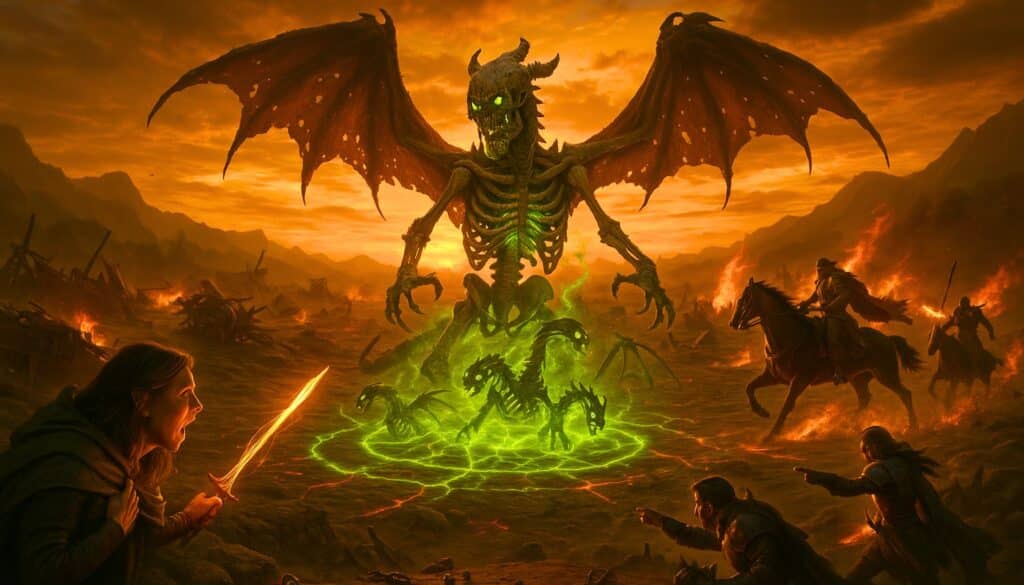
Combining Mobility with Control Effects
Monsters that blend free movement with battlefield control are the quickest to slide from “challenging” into “outright broken.” A creature that can dart across the map while locking down, ensnaring, or impeding player characters rapidly upends the typical flow of combat. The synergy between feats like flight or teleportation and control effects—grapples, restrains, area denial—means the monster acts both as hunter and jailer, bending the arena to its will.
Excelsior monsters leverage their mobility not just to chase, but to escape, reposition, or strike from unexpected angles. Imagine an ettercap snatching a party member and vanishing up a web-laden wall, or a cloaked wraith drifting through objects while inflicting fear. These effects intensify when combined: climbing speed bolsters grapples, teleportation makes restraint inescapable, and flight paired with stunning attacks can leave grounded PCs easy prey.
Environmental features further magnify these tactics. Picture a hydra whose battlefield is pocked with deep pools, forcing players to approach on uncertain footing while its heads lash out from safety. Or a behir beset by hurricane winds in its lair, suddenly gaining the ability to swoop down on unsuspecting targets. The DM’s light touch—granting new movement options or adjusting the terrain—turns every control power into a dynamic threat.
Taken together, these combos create encounters where players never feel safe, constantly reevaluating their plans. Surprise rounds are more surprising, retreats more desperate. Even a traditional monster, tweaked for enhanced movement and sharpened control, can become the centerpiece of an epic story session.
Examples of Mobility + Control Combos:
- Granting a behir fly speed when fighting within the gale-force updrafts of its mountain lair
- Adding a grapple attack to a giant spider, letting it pin and drag enemies up webs
- Allowing a cloak guardian to use misty step and gaining a temporary area-of-effect turn undead aura
- Using swampy, muck-laden terrain to extend a hydra’s reach via hidden necks
- Combining legendary movement with earthbind, rooting players in place as the monster zips around
- Giving a froghemoth the ability to leap from pond to pond, pulling grappled targets under the water
- Imbuing a marilith with teleport, letting it instantly appear in melee with the party backline
- Empowering a giant constrictor snake with a lair action that turns the floor into slick mud, making escape impossible
- Granting a banshee etherealness with a bonus action, allowing attack through walls while screaming paralyzingly
- Combining barbed devil’s teleport with a cloudkill spell for mobile, toxic area denial
- Turning a treant into a mobile root system, restraining foes while shifting terrain with its movement
- Allowing a wyvern to divebomb, grappling and then immediately carrying prey skyward
- Giving a frost salamander the ability to burrow while chilling ground, immobilizing anyone caught atop its icy trail
In practice, these mobility-plus-control monsters escalate quickly. Players are forced to strategize, rely on one another, and improvise solutions. The threat feels alive, capable of turning any moment into a desperate scramble. With great power comes the responsibility to telegraph and moderate—too much, and these encounters can overwhelm less-prepared parties. DMs should always be ready to offer counterplay, alternative objectives, or narrative cues for creative escapes. When handled well, this style transforms even familiar monsters into show-stoppers that make players recount their narrow survival for years.

Layering Legendary Actions with Spellcasting
Legendary actions are a well-loved tool for keeping boss monsters dangerous throughout a round, but when melded with caste-worthy spell features, they break the standard action economy wide open. Picture a dragon dealing damage on its own turn, and then twice more between each player’s move—or worse, a lich casting a high-level spell and immediately following with a barrage of legendary attacks. Each additional reaction, bonus action, or spell woven into their turn increases the threat exponentially and can create a sense of an unending assault.
Monster Manual 2025 offers several monsters that natively blend legendary actions, bonus actions, and spellcasting prowess. The secret sauce comes from creative tweaks—granting spell-like effects as legendary actions, chaining reactions, or supercharging spell lists. In the hands of a DM, these combos allow monsters to dominate the battlefield, shape initiative, and leave the party scrambling for cover. Stacking legendary actions with spell-like powers means a monster doesn’t have to choose between offense and control—it gets both, all the time.
The multiplying effect is dramatic. Granting a beholder legendary counterspell lets it nullify spells outside its own turn, or letting a yuan-ti pureblood hurl a quickened spell as a legendary action turns it into a whirling magical threat. Most staggeringly, high-level casters with legendary actions essentially double-dip, casting a signature spell and then, moments later, slamming the party with a secondary effect or utility power. The dichotomy between heavy-hitting spells and micro-action effects builds tension as players can’t predict where the next threat will come from.
The challenge here is pacing. Too many legendary actions, combined with big spells, can drag out rounds or obliterate an unprepared team. DMs should pay close attention to resource management—burning slots, recharging abilities, and making sure each legendary action feels unique and purposeful. Layering actions with intention preserves that edge-of-your-seat dynamism without flooding the board with useless or overwhelming complexity.
Examples of Legendary Action + Spellcasting Combos:
- Adding a legendary telekinesis action to a yuan-ti pureblood, allowing it to reposition targets between spells
- Granting a beholder legendary counterspell, letting it disrupt caster plans every round
- Empowering a lich with quickened eldritch blast as a legendary action for additional ranged damage
- Allowing a marilith to cast shield as a legendary action, negating attacks at will
- Giving a red dragon legendary bonus action to hurl fireball mid-combat
- Allowing a death knight legendary dispel magic, instantly canceling party buffs between turns
- Granting a mind flayer the ability to use dominate monster as a legendary action, making quick thralls of stunned foes
- Letting a rakshasa cast legendary mirror image, restoring illusions for defense every round
- Adding a storm giant the power to cast chain lightning as a legendary action, splitting damage across clustered characters
- Enhancing a dracolich’s legendary action list with vampiric touch for self-healing
- Allowing a hag coven lair action to cast hex as a legendary action, cursing players in rapid succession
This technique turns boss monsters into omnipresent hazards. There is rarely a safe moment, forcing players to plan, feint, and coordinate like never before. While the narrative thrill is undeniable, DMs must keep one eye on the tempo of the encounter—recharging actions too quickly or running the monster dry on resources too soon saps dramatic tension. Responsible use means giving players time to adapt and ensuring every ability reveals character or advances the story.
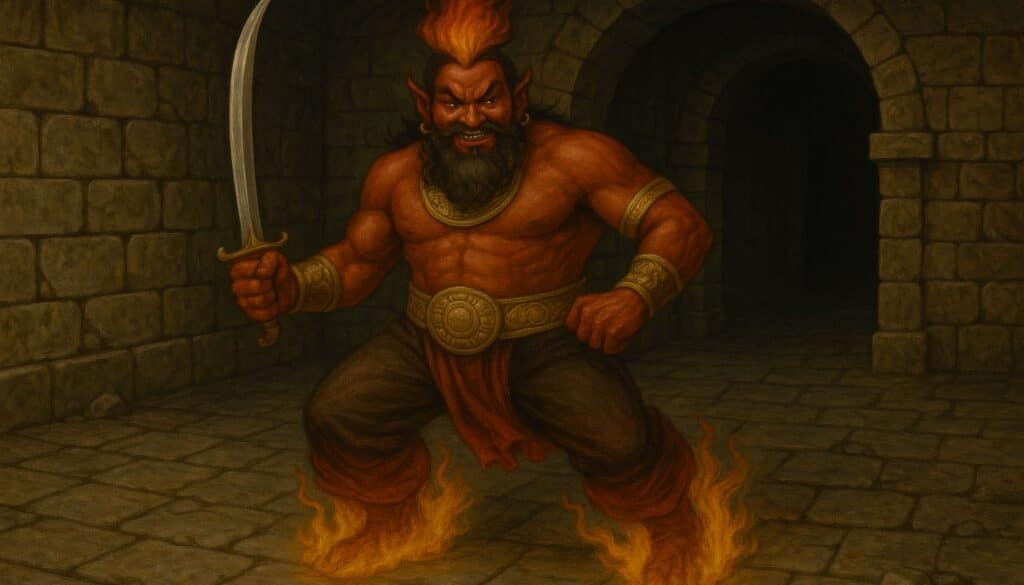
Exploiting Lair Actions with Environmental Hazards
Lair actions are designed to let monsters leave their mark on an environment, turning the terrain from backdrop to a weaponized extension of their will. When combined with environmental hazards, these powers become exponentially deadlier, stacking effects in waves that disorient, divide, or endanger the adventuring party. Volcanic caverns with lava flows, haunted temples with shifting corridors, or deep jungles choked in poisonous mists all provide perfect staging grounds for lair action escalation.
⚔️ Fantasy RPG Random Tables Books
Make life as a Gamemaster easier…
If you play Dungeons & Dragons, Pathfinder, or other fantasy RPGs, this
RPG random tables series
is packed with encounters, NPCs, treasure, and more. Available in eBook or print—either way, you’ll have a wealth of adventure ideas at your fingertips.
The true power here is in layering—using lair actions to trigger or amplify hazards already present, and vice versa. In the first round, a manticore might cause a pit trap to open; in the second, poisonous gas seeps in; in the third, the floor slides, dumping players into a summoning circle. Each round ramps up the peril, forcing the party to adapt to changing conditions, juggle priorities, and rethink their objectives mid-combat. The unpredictability keeps adrenaline high and strategies fluid.
These hazards need not be purely destructive. Sometimes they isolate party members, separate the healer from the frontliner, or force spellcasters out of their protected zones. When paired with monsters that can exploit these situations—perhaps teleporting into an exposed arcane circle or knocking PCs off balance into a waiting hazard—the fight becomes a chess match between players and environment. The escalation keeps everyone on their toes.
The essential trick for DMs is to telegraph environmental dangers, give players tools for mitigation or escape, and pace the stacking effects for mounting tension rather than sudden, unfair TPKs. Progression toward disaster, not instant doom, is the mark of a well-broken encounter.
Ways to Combine Lair Actions and Environmental Hazards:
- Opening pit traps with a lair tremor while ceiling stalactites fall from above
- Flooding the room with poison gas vents each round after a summoning circle is activated
- Sliding stone walls that divide the party, coupled with magical darkness that isolates individuals
- Runes that teleport random creatures every lair action round to dangerous glyph-covered platforms
- Slippery ice floors combined with shifting terrain, sending players sliding into monster reach
- Summoning swarms of biting insects, triggered by trap triggers with lair magic
- Creating shrinking force fields that push characters toward environmental dangers like lava flows
- Animated chains dangling from the ceiling that restrain, then lift PCs away for easier targeting
- Geysers that erupt on a lair action, knocking players prone or into hazardous pools
- Falling chunks of crystal that refract spells or ricochet damage unpredictably
- Infusing cursed fog with lair energy, causing confusion or madness in those who fail saves
- Eruptions of necrotic energy from ritual runes that set the floor ablaze, burning or shadow-stepping enemies
The result? Fights that feel larger than life and worthy of legend, where every swing also dodges falling rock, and every spell risks attracting the attention of something ancient and restless. As with all high-lethality play, fairness matters: let clues emerge before hazards trigger, describe environmental features in vivid detail, and always provide paths to escape or clever counterplay. The most memorable encounters are those that force ingenuity but never descend into hopelessness.
Breaking Resistances and Immunities via DM Tweaks
Resistances and immunities are cornerstones of monster survivability, but when a DM starts tweaking them—even slightly—the impact can be enormous. Granting a creature immunity to psychic damage in a psion-heavy campaign, or suddenly making a spore monster immune to mundane slashing attacks, shakes up expected party tactics. On the flip side, stripping a legendary creature of its fire immunity surprises clever parties who research and exploit lore, rewarding inventiveness at the table.
These mechanical levers shift the difficulty curve rapidly. Upgrading a fiend to resist radiant damage can undermine cleric strategies, while imbuing an elemental with immunity to cold makes a frost mage feel helpless—and pushes the party to change tactics on the fly. Chosen carefully and telegraphed with in-game clues, these changes generate fresh storytelling, making even over-familiar monsters thrilling again.
The real finesse comes from balancing tweaks with the party’s composition and known capabilities. DMs can inject new energy into old monsters, but overdoing immunities or stacking too many resistances can feel like punishment, not challenge. Players must always feel there’s a path forward, even against seemingly insurmountable foes. Nuanced resistances create puzzles, not walls.
Try my AI Tabletop RPG generators...and an extensive library of content!
When in doubt, give clues through research, monster rumors, or visible “tells”—a shimmering shield, crackling runes, or wounds that close instantly. This encourages creative play, not rote routine, and sets a tone where knowledge and preparation matter as much as raw firepower.
Examples of Resistance/Immunity Tweaks:
- Granting undead immunity to psychic damage for a mind-flayer’s lair
- Making dragons resistant to radiant, stymying paladin-led parties
- Adding magic weapon immunity to spore creatures, forcing spell damage or fire
- Giving fiends complete immunity to force damage, disrupting warlock hexblades
- Upgrading constructs to resist poison and psychic
- Making elementals immune to nonmagical attacks and resistant to all but one favored damage type
- Granting trolls fire resistance to defeat classic lore expectations
- Bestowing immunity to thunder damage on storm giants
- Allowing fey to absorb all nonmagical bludgeoning, unable to even be grappled by mundane means
- Letting a mummy lord become immune to radiant in its ritual phylactery chamber
- Giving aberrations resistance to all cantrip-level damage, forcing high-slot resource use
Even a subtle change can re-contextualize an entire combat. These tweaks work best when they’re more than arbitrary—they should add flavor, fit the monster’s emerging narrative role, or nod to local legend. Sudden shifts can frustrate, so build anticipation with lore, scouts, or in-combat signals. When done thoughtfully, changing resistances turns fights into evolving puzzles, not brick walls.
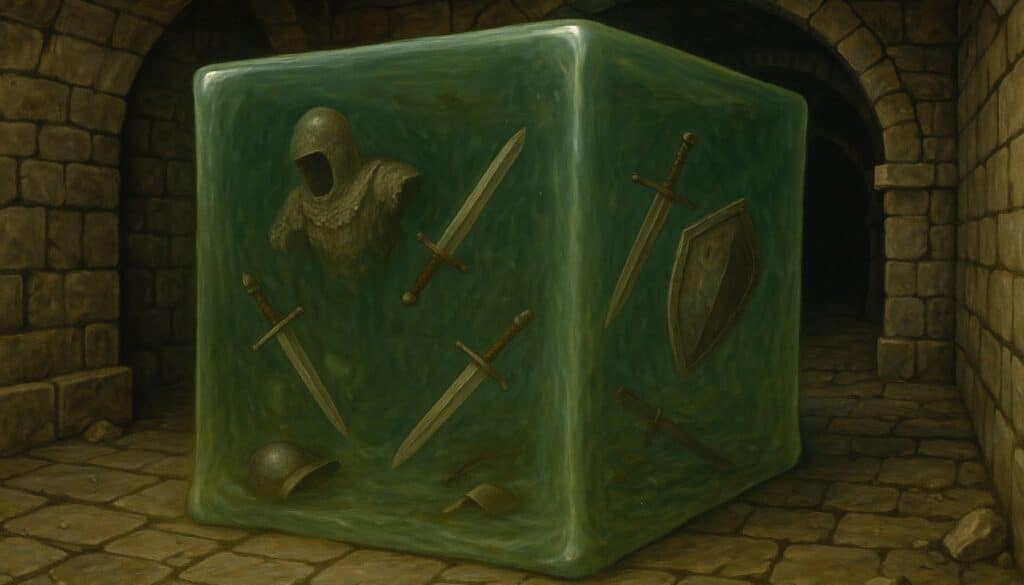
Boosting Action Economy with Summons and Environment
Action economy is the heartbeat of D&D combat, and monsters that summon minions or animate the landscape weaponize it in the most spectacular ways. Every new creature called or object animated is an extra attack, more battlefield control, and another set of actions between player turns. By combining summoning powers with advantageous terrain or giving summons bonus effects—for instance, poisonous attacks, grappling, or spell resistance—the DM can build encounters that feel massive and desperate, even with just a few high-HP monsters.
The compounding effect round after round can overwhelm even veteran adventurers. A mummy lord summoning ankhegs in quicksand, or a druid boss animating trees in a narrow glade, quickly tips the scales as the players find themselves swarmed on multiple fronts. Summoned allies may serve as distractions, block retreat routes, or shield their master, requiring a full party to split focus and adapt rapidly.
Environmental animation is just as potent. A haunted suit of armor might animate every sword and tapestry in the room, or a storm sorcerer could call down lightning that turns gargoyle statues into temporary guardians. Summons that interact with terrain—climbing, hiding, or using lair features for ambush—transform a static set piece into a living, tactical arena.
The true risk, of course, is slowing the pace of play. Summon-heavy encounters can drag when every creature requires separate initiative, actions, and tracking. DMs should group summoned creatures, give them simple AI, or let them act in concert for smoother play.
Summon Combos for Shattered Action Economy:
- A giant mummy lord summoning burrowing ankhegs that attack from beneath
- Druid villains summoning awakened tree blights to clog choke points
- Dracoliches raising skeletal wyrmlings as flying reinforcements
- Hag covens calling shadow mastiffs during ritual phases
- Animated objects under a golem’s command, sweeping the battlefield
- Stone giants summoning earth elementals in rocky caves
- Naga conjuring snakes that grapple and poison
- Froghemoth spawning smaller amphibians in nearby pools each round
- Mind flayers summoning intellect devourers to flank casters
- A fire giant cleric calling living magma mephits amid lava flows
- Sea hag animating kelp swarms to restrain and blind
- Necromancer apprentice raising a tide of crawling hands from graveways
- Ancient vampires calling spectral bats that inflict necrotic wounds
- Genie lords animating carpets, urns, and mirrors for chaotic battlefield cover
The result is a rich, dynamic brawl where the tide constantly shifts. Action overload can be mitigated by treating summon groups as one, giving them unified initiative, or automating their moves. For boss fights, reserve this method for mid- or late-combat escalation, not as the opening salvo—otherwise, battles can slow to a crawl. With smart management, summon-driven encounters provide cinematic set pieces and a relentless sense of urgency.
Case Studies: Broken Encounters in Action
Let’s step into the wild laboratory of broken encounters and see these techniques at play. Imagine an ice titan atop a creaking glacier, wielding lair actions to collapse crevasses under party members’ feet while summoning blizzards. Between legendary mobility and environment-triggered hazards, the ground warps with every round. Survival depends as much on agility and creative thinking as on raw damage output.
Then there’s the corrupted treant, rooted in a river valley. On its turn it floods the battlefield with legendary rapids, sweeping players into dangerous terrain, while branches animate to grapple and spellcasting roots split the earth. Spell resistance, lair perks, and the interplay of mobility and layered control keep the combat in a state of thrilling upheaval. The encounter evolves as new threats emerge, showcasing the power of combining traditional monster abilities with creative tweaks.
Consider a vengeful rakshasa, whose reality-warping lair bends time and space. Legendary actions let it fling spells, teleport, and create illusions mid-fight, while lair actions distort initiative order and fracture the battlefield into surreal portals and hazards. The party must confront not just the monster, but the world itself suddenly out of joint. Every round becomes a test of wit and perception, rewarding those who adapt quickly to shifting rules.
Finally, a death knight marches from crypt shadows, shrouded in layered resistances and supported by waves of undead summons. Environmental triggers—glyphs of warding, necrotic mists, animating armor—ensure that every inch of terrain is lethal. The broken encounter here is not about raw damage, but about outlasting a relentless marathon of aggression, stacking pressure until the adventurers are stretched to their limit.
| Encounter Name | Break Method | Player Impact | Lessons Learned |
|---|---|---|---|
| Ice Titan Glacier | Lair + Mobility + Environmental Hazards | Forced movement, split party | Telegraphed hazards foster creativity |
| Corrupted Treant | Layered Spellcasting + Lair Floods | Rapid terrain change, grappled PCs | Spell/lair synergy sustains tension |
| Vengeful Rakshasa | Legendary Actions + Reality Warping | Unpredictable initiative, chaos | Shifting rules reward flexibility |
| Death Knight’s Crypt | Summons + Resistances + Hazards | Wear-down attrition, exhaustion | Reward alternative objectives |
| Beholder’s Maze | Legendary Spells + Forcefield Lair | Constant suppression, split fights | Spread threat, allow escapes |
| Dracolich Aerie | Flying Summons + Lair Lightning | Overwhelming action economy | Use waves for pacing |
| Clockwork Abomination | Merged Monster Features + Terrain | Everything at once, panic | One-off use is dramatic, not routine |
| Ghost King Ruins | Immunities Shift + Phasing Hazards | Nullified strategies, forced lore | Foreshadow to maintain fairness |
Across these examples, patterns emerge—action stacking, synergizing terrain, and surprise spikes form the backbone of legendary encounters. The best results come from scripting the evolution of the fight, letting new layers reveal themselves as the party adapts. Broken encounters function best when they are pivotal story events, carefully choreographed for drama, not dropped in by accident. When DMs orchestrate these clashes with intention and transparency, the chaos becomes a crucible for unforgettable heroics.
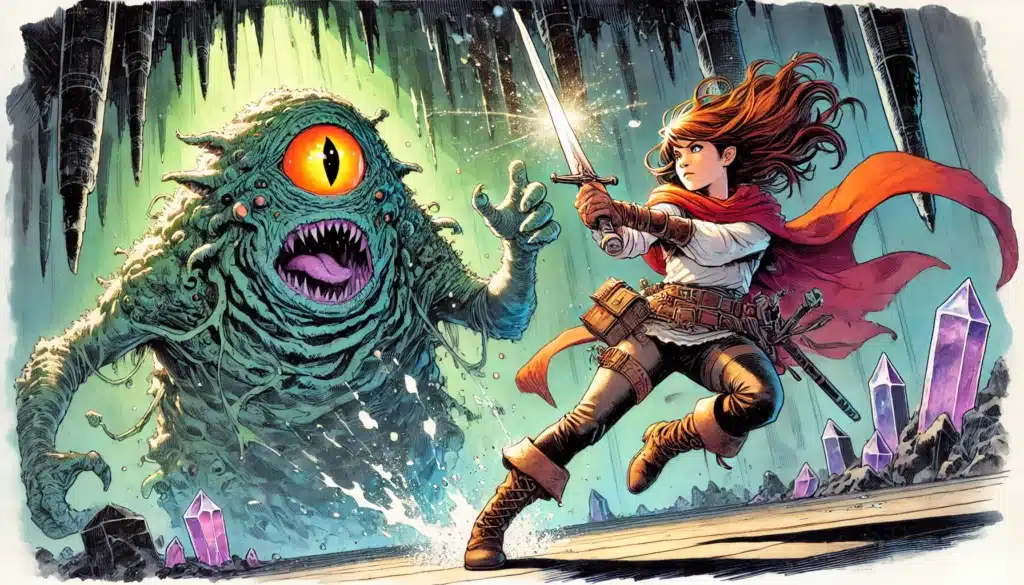
Evaluating Player Experience and Fairness
No matter how inventive a DM gets with breaking monsters, the measure of a great encounter is always the player experience. If a battle feels epic—dangerous but winnable, surprising but surmountable—players come away thrilled. Epic battles are defined as much by pacing and player agency as by raw numbers or ability combos. The best fights let players make meaningful choices, find clever counterplay, and receive rewards that feel earned, not merely delivered.
DMs must stay attentive to their group’s reactions in real time. If tension gives way to resignation, or excitement curdles into frustration, it’s time to adjust. This might mean scaling back mid-fight, providing narrative out-clauses, or explaining rule-bending before the fight begins. A transparent DM, open to feedback, creates a table where risk is embraced but never weaponized against fun.
Counterplay is crucial. No monster, however terrifying, should be immune to everything the party has to offer. Creative, lore-based solutions—breaking the ice, toppling the statue, or leveraging clever spells—let every player shine, even in the direst scenario. Balance isn’t about sameness; it’s about making sure every session feels tailored to the players, their strengths, and their story.
When Breaking Goes Too Far
Excessive breaking crosses the line from thrilling to demoralizing when it deprives players of meaningful agency. If a fight turns into a one-sided slaughter, or if monsters gain so many instant-win buttons that the party is left powerless, the table’s energy sours quickly. Unchecked, this style becomes a dreary game of attrition, exhausting and repetitive rather than climactic and memorable. The danger is highest when the DM repeats these highs too often, creating an arms race of broken encounters that eventually burns out the fun.
⚔️ Fantasy RPG Random Tables Books
Make life as a Gamemaster easier…
If you play Dungeons & Dragons, Pathfinder, or other fantasy RPGs, this
RPG random tables series
is packed with encounters, NPCs, treasure, and more. Available in eBook or print—either way, you’ll have a wealth of adventure ideas at your fingertips.
Warning signs are clear. Players groan when a monster acts endlessly, or when every spell fizzles and every move is blocked. If character death feels predetermined, or clever tactics are met with invulnerable walls, the sense of epic struggle collapses into frustration. The key is to build in moments of hope, notice when things are tipping, and check in after a session for honest feedback.
Over-the-Top Tweaks to Avoid:
- Granting monsters triple legendary actions, acting after every single player
- Allowing unlimited summons with no cap, flooding the board endlessly
- Constant save-or-die effects with no counterplay or incremental risk
- Silent immunities, never described or hinted, that invalidate key party abilities
- Unavoidable instant death traps triggered with no warning
- Terrain collapsing under the party with no clues or chance to react
- Perma-invisibility without ways to detect or mitigate
- Layering multiple lair actions so hazards trigger every turn, not every round
- Stack resistances/immunities across all major damage types
- Magical suppression fields blocking all spells, items, and class features
- Legendary resistance that recharges every round endlessly
- Environmental effects that chain-react in ways no player could foresee
The heart of D&D is agency and stakes. Powers that cannot be countered, or hazards without clues, quickly become hollow triumphs for the DM and sources of disillusionment for players. The solution isn’t to ban breaking outright, but to add fail-safes—alternative win conditions, hidden advantages, or ways for players to reset the balance with clever thinking or heroic sacrifice. True epic moments bloom not from total domination, but from wild swings, reversals, and the chance for heroic recovery even when the odds look lost.
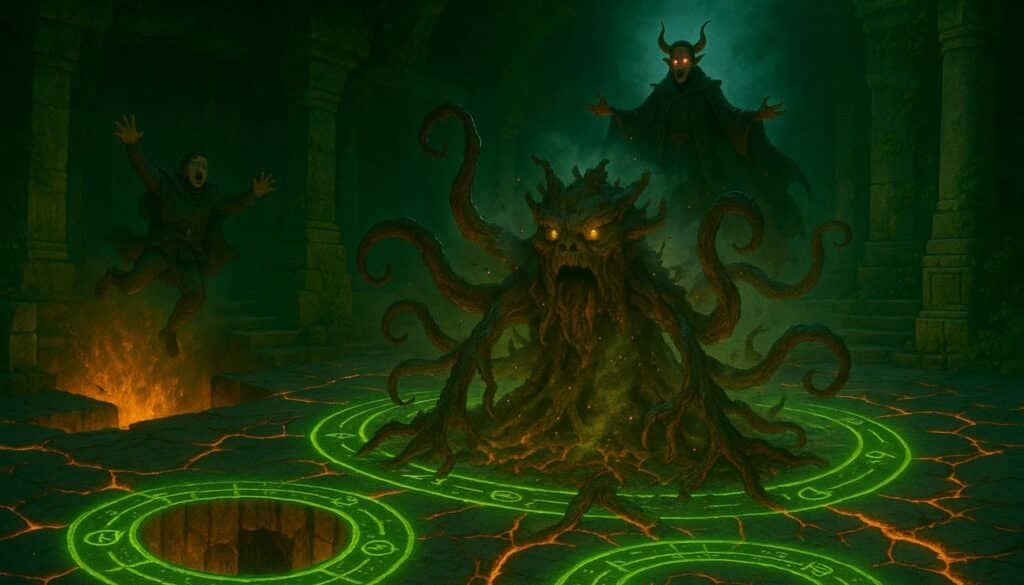
Best Practices for Responsible Breaking
Mastery of encounter-breaking begins with responsibility. Testing ideas behind the screen (or in one-shots), scaling difficulty in stages, and communicating intentions with your players all serve to strengthen trust and enrich storytelling. Gradual escalation lets parties acclimate to new challenge levels without ever feeling railroaded into disaster. A DM who paces their breaking thoughtfully creates space for both triumph and learning.
Keep your monsters’ new abilities modular. Start by adding a single legendary action or one terrain hazard, then observe how the party reacts. If they adapt and succeed, ramp things up next time. If frustration or confusion starts to set in, dial it back and tweak your approach. Sharing after-action reports with the group to gauge their excitement offers insight into what works for your table.
Clarity and consent matter, especially with dramatic tweaks. Out-of-game signals (“This is a legendary encounter, expect surprises!”) help set expectations and reduce feelings of DM fiat. In-game clues—magical sigils, unusual environmental cues, cryptic rumors—give parties opportunities to prepare and strategize. Responsible breaking doesn’t mean shattering trust; it means building anticipation together for something memorable and wild.
Tools and Tracking for Tweaked Encounters
As monsters, lair actions, and hazards become more elaborate, so too must a DM’s tracking tools. Documenting house rules, detailing encounter adjustments, and keeping track of terrain triggers ensures continuity and fairness. Write out each monster’s new features on index cards or in a campaign journal, making special note of once-per-rest uses, legendary action quotas, and which hazards have already been triggered. This prevents accidental repeats and ensures all abilities play out as intended.
Physical or digital trackers—initiative boards, counters, or spreadsheets—can help monitor legendary action usage and environmental changes. For complex hazards or phased encounters, jot down states (e.g. “chasm opened,” “glyph triggered”) so you don’t forget which story beats or traps have already played out. Good records make it easier to adjudicate confusion at the table, keeping the chaos organized rather than bewildering.
Finally, clear communication with players underpins all this preparation. After high-stakes encounters, review what worked, explain any unique mechanics in play, and confirm that everyone felt both challenged and empowered. This open channel builds buy-in for future sessions, letting you push boundaries without risking player trust.
| Break Method | Tracking Approach | Player Communication Notes |
|---|---|---|
| Custom Legendary Actions | Index cards, action counters | Explain new options before fight |
| Environmental Hazard Chains | State lists, terrain maps | Foreshadow hazard triggers |
| Layered Spellcasting/Lair | Spell slot trackers, color codes | Announce phase or wave changes |
| Variable Resistances | Monster sheet notes, markers | Lore clues, visible effects |
| Summoning Waves | Initiative tracker, group AI | Telegraph reinforcements |
| Animated Objects/Minions | Batch initiative grouping | Describe changes narratively |
| Phased Legendary Resistance | Check-off boxes, recharge icons | Warn about new phases in narration |
| Terrain Shifts | Modular map overlays | Show shifting map areas visually |
| Action Economy Boosters | Round-by-round legend templates | Confirm extra actions aloud |
| Homebrew Abilities | Dedicated homebrew sheets | Clarify house rules pre-session |
Organized breaking keeps play fast, fair, and full of wonder. It enables wild experimentation without derailing continuity or undermining campaign integrity. When all participants know what’s happening—and where the boundaries lie—sessions become playgrounds for creativity, not battlegrounds of confusion.
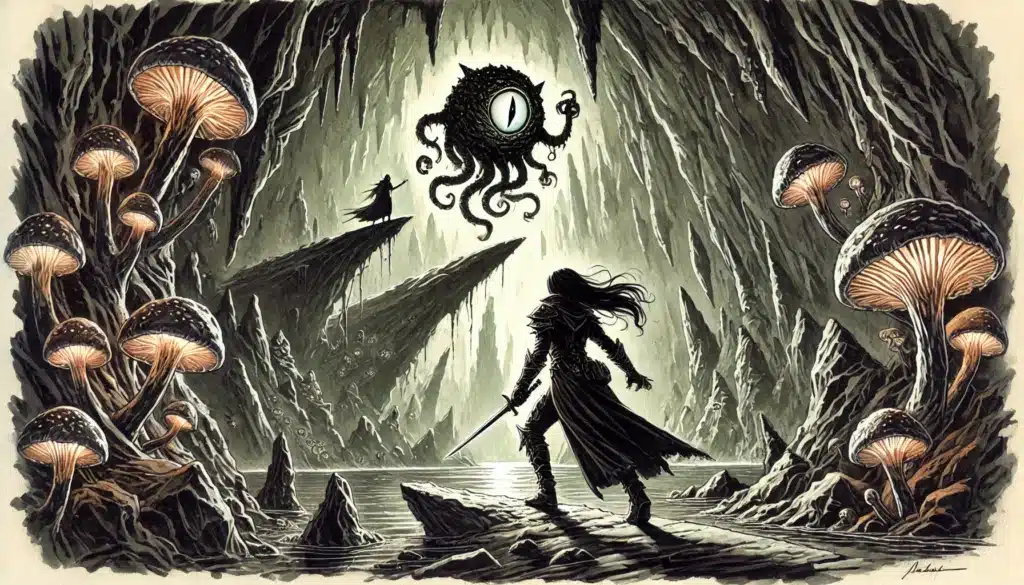
Breaking the 2025 D&D Monster Manual
Breaking the Monster Manual is less about mechanical one-upmanship and more about chasing the electric thrill of uncharted storytelling. The moments that players recall for years—the desperate last stand against a suddenly-empowered lich, the frantic race as the ground splits beneath their feet, the dramatic reveal when their favorite trick fails—arise when encounters defy not just balance, but expectation. By mindfully cherry-picking, combining, and amplifying monster features, DMs can turn the 2025 Monster Manual into a living, breathing toolkit for narrative chaos.
Moderation remains the safeguard of fun. Break your monsters in subtle increments, learning your party’s excitement threshold. Iterate on successes, discard what feels hollow, and reserve full-on “broken” set pieces for story milestones and boss battles. Consistent communication—both in how you foreshadow monster weirdness and how you debrief after tense sessions—ensures that the spirit of play remains intact.
Don’t be afraid to test the boundaries of the Monster Manual, but remember: it’s a guide, not a cage. The book is designed to be modded, torn apart, and rebuilt in the image of your table’s dreams. When approached as a co-creative sandbox, every stat block becomes an opportunity for collaborative myth-making. The aim is not annihilation, but transformation—turning each encounter into an unpredictable performance and ensuring that the game stays fresh for both players and DM.
Above all, never lose sight of the player-first mindset. Breaking encounters thoughtfully means planning not just for spectacle, but for player agency and triumph. The greatest stories emerge when monsters at the edge of possibility meet players determined to survive—when everyone at the table roots, even secretly, for each other’s biggest moments.
In the end, the fastest way to break the 2025 Monster Manual is simply to embrace the wild spirit at its core. Push, prod, and experiment, always with an eye for joy and a readiness to reshape the session as it unfolds. The reward is a campaign full of retold legends and improv glory—stories that, thanks to a little breaking, last long after the final die is cast.
Try my AI Tabletop RPG generators...and an extensive library of content!





